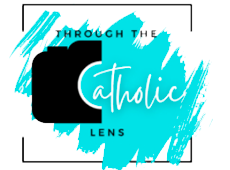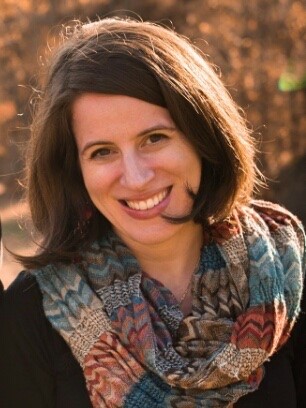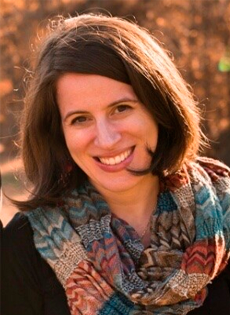
Horribly boring Halloween horror
Wednesday, October 4, 2023
Eleanor Bourg Nicholson
Long before the end of summer, I was surprised (and yet not surprised) to encounter a gigantic display of pumpkins, witches, and zombies in a hardware store. My work as a novelist and as a teacher often leads me into the realm of Gothic horrors. I’ve spent a great deal of time over several decades studying vampire, werewolf, and zombie folklore. I endeavor to discern man’s yearning for God, even in our questionable culture. Nevertheless, I confess to some grumpy impatience with the display — and not only because it distressed the 4-year-old and 2-year-old in my cart.

Eleanor Bourg Nicholson
There are two reasons for my impatience. The first is the misrepresentation of the origins of Halloween. Halloween arose from disparate sources, all of them deeply Catholic. They began with the establishment of the feasts of All Saints (moved from May to Nov. 1 in the eighth century) and All Souls (on Nov. 2, originating in the 10th century).
- With the blessed and the faithful departed duly acknowledged, Irish Catholic peasants worried that the damned would feel left out. Much to the disapproval of the clergy, they developed pseudo-pious practices to appease evil spirits on “All Hallows Even” — Oc. 31.
- Our macabre costumes are derived from the “Dance Macabre” or “Dance of Death” in France, which developed in the 14th and 15th centuries because the faithful were driven to consider the reality of death after repeated outbreaks of the Bubonic Plague.
- “Trick-or-treat” comes from anti-Catholic practices in England in the 17th century and onward, where pranks were perpetrated against, and penalties exacted from, the much-oppressed and repressed Catholic population.
Put them all together via the American mixing bowl and you have our Halloween.
Unless the zombie depicted on that stand was meant to represent a mischievous Puritan on Guy Fawkes Night, none of this was conveyed in what I saw at the hardware store.
The second reason for my impatience is that this display does not merely demonstrate lack of historical knowledge, it misses the spirit of the whole enterprise. These practices are rooted in a sense of the supernatural, the preternatural, and natural.
We as Catholics worship God. We recognize the presence and agency of angels and demons. Finally, acknowledging our own fallenness and need for grace, we accept the reality of death. (The plaguing of English Catholics shows the consequence of this belief when it encounters the outside world — the result is persecution.)
All of these elements point to what ought to be at the heart of any Halloween display: the inescapability of death and judgment.
The central mechanism of the Gothic genre is, in fact, a point of moral revelation. Fallen man gazes at monsters and feels horror and repulsion. Then he realizes (or the reader realizes for him) that the Gothic is a distorted funhouse mirror, and the potential for monstrousness lies in his own heart. The greatest Gothic novels have this potential, whether it is realized or not. That is what elevates the genre beyond macabre, garish spectacle without depth.
There are, of course, appalling specimens; some of the “Penny Dreadfuls” that were popular in the Victorian period were painfully awful. Nevertheless, the novels that endure — “Frankenstein,” “Dracula,” “The Strange Case of Dr. Jekyll and Mr. Hyde,” “The Picture of Dorian Gray,” “Wuthering Heights,” “The Hunchback of Notre Dame,” “The Phantom of the Opera” — are deeply embroiled in themes of moral corruption and damnation.
Horror without the possibility of redemption is dissatisfying. Monstrousness without that possibility expresses nihilistic despair — a despair that is both dreadful to contemplate and profoundly boring.
This may very well be the reason that zombies are so popular right now. Simplifying all of the (mostly silly) zombie sub-categories today, the zombie is a mindless, flesh-eating drone which simply destroys. It is not a force of temptation; it is a soulless, reanimated corpse to be obliterated. It is not a creature of deep moral questioning; it is a stock-figure for blow-its-head-off videogaming.
Thus, to the exuberant designers of the Halloween display: Perhaps I would be better able to see interest and even cultural depth here, had I not been forced to take a convoluted path to the plywood, calming hysterical children along the way. As it is, I find your zombies disturbing, but also pathetic and uninteresting. And that may very well be the worst that I can say about them.
Eleanor Bourg Nicholson is a scholar, an award-winning novelist (A Bloody Habit, Ignatius Press, 2018; The Letters of Magdalen Montague, Chrism Press, 2021; and Brother Wolf, Chrism Press, 2021), Victorian literature instructor for Homeschool Connections, a Dominican tertiary, and a homeschooling mother of five. She attends St. Thomas Aquinas University Parish in Charlottesville, Virginia. Read more at her personal site: eleanorbourgnicholson.com.

